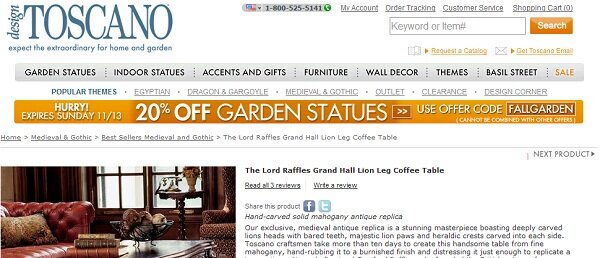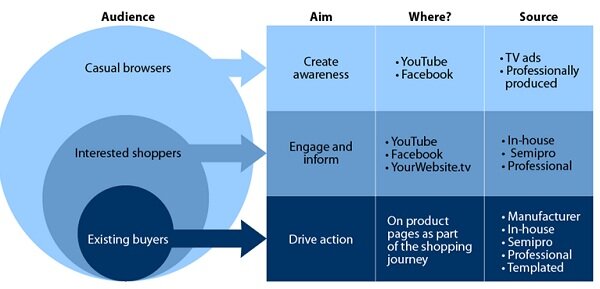Holiday watch: Connecting with consumers amidst Black Friday crowds
November 21, 2011 Leave a Comment
The big weekend is almost here — Thanksgiving, Black Friday and CyberMonday are all now just days away. The first and biggest big red-letter days on the holiday shopping calendar may well set the tone for the rest of the season to come.
Merchants have cause to feel optimistic. The recently-released forecast from industry researcher Forrester estimates that online holiday sales will total $59.5 billion, growing by a robust 15 percent compared with 2010 – higher than Kantar Research’s earlier growth estimate of 13.5%.
One of Forrester’s top predictions: “Key dates are getting bigger.” According to the report, increased activity at U.S. ports and the aggressive Black November/Black Friday promotions that have been in circulation all month, combined with traffic trends from 2010, indicate merchants should do all they can to maximize opportunities in the coming days.
A Forrester graph using 2010 and 2009 data from Experian Hitwise shows the rapid acceleration of Black Friday-related search terms, beginning in mid-October.

Merchants are certainly getting in the game, with many sites now advertising Black November deals or Black Friday “sneak peeks”, Chad White’s Retail Email blog has been tracking email volume to date, and he reports retailers are now sending an average of 3.6 messages per week in the runup to the big weekend, outpacing last year. And as of October’s end, holiday-related content and promotions have surged.


At the same time, consumer sentiment seems mixed when it comes to Black Friday. Some major stores will open bricks-and-mortar locations and offer deals on Thanksgiving Day itself, or at midnight on Black Friday — according to various media reports. The New York Times reports that shoppers don’t relish the idea of forgoing Thanksgiving gatherings to stand in line for deals, and some object to companies forcing employees to work on what many perceive as a sacred day for family (and football).
Online, merchants can sidestep this thorny issue — but they may face a challenge in discount overload. After all, shoppers are already primed not only by a month of Black November messaging, but by the constant expectation of discounts engendered by daily deal sites and merchants’ weekly or daily featured product discounts. A Washington Post blogger has even predicted .
Meantime, though, most merchants are planning blowout offers for the coming weekend — and to beat discount fatigue, it’s imperative to stand out in the crowd. To elevate your Black Friday game, enact these last-minute tweaks:
- Use prominent global positioning to highlight specials.With any page on your eCommerce site a potential landing page from a search engine or direct link, be sure that Black Friday/CyberMonday deals are prominently positioned throughout the eCommerce site — as MarketLive merchant Design Toscano does for a November sale on garden statues. The banner is positioned at the top of the center content area on every page, making it impossible to miss.

- Emphasize crowd-free convenience.Message directly to shoppers balking at the prospect of Thanksgiving and Black Friday lines by stressing the convenience and ease of online shopping. MarketLive’s 2011 Consumer Shopping Survey found that “saving time” resonated with 77% of consumers as a motivator for shopping online — second only to “saving money” at 79%. “Avoid the crowds at the mall” was another top incentive, chosen by 73% of consumers.
- Follow through with service.To fulfill customer expectations of online convenience, elevate customer service contact information, clearly message shipping and delivery timelines and promote return and exchange policies. Land’s End promotes customer service with a graphic promoting easy returns and other services in the left-hand column beneath secondary navigation — and also ensures key service information is close to hand throughout the site with a global header that’s anchored to the bottom of the browser window as shoppers scroll. The footer includes links to customer service contact information and to crucial shipping information.

So, are you ready for Black Friday? How do you predict sales will fare?
 Additionally, as predicted, the platform is indeed on track to integrate with Google’s other applications and services, starting most notably with search. Google users who type a “+” before a brand name in the search box will be routed directly to that brands Google+ page – a more direct route than searching a brand name plus “Facebook” and clicking on the correct link (which is not always the top result).
Additionally, as predicted, the platform is indeed on track to integrate with Google’s other applications and services, starting most notably with search. Google users who type a “+” before a brand name in the search box will be routed directly to that brands Google+ page – a more direct route than searching a brand name plus “Facebook” and clicking on the correct link (which is not always the top result). And here are the brand’s Google+ Posts:
And here are the brand’s Google+ Posts:














 Forrester recommends a tiered approach, using social networks to create and increase awareness and the eCommerce site to spur purchasing. But within the eCommerce site alone, there are still more ways to maximize video visibility. Consider these updates of tried-and-true eCommerce concepts:
Forrester recommends a tiered approach, using social networks to create and increase awareness and the eCommerce site to spur purchasing. But within the eCommerce site alone, there are still more ways to maximize video visibility. Consider these updates of tried-and-true eCommerce concepts:








Connect with us: